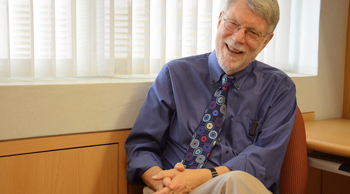Why Singapore’s English Teachers Should Embrace Singlish, Not Fight It
Is it time for Singaporean educators to embrace Singlish as a legitimate learning tool? What the Research […]
Read More
John Seely Brown calls himself the “Chief of Confusion”. In a world of constant change, he says, we need new ways to learn. We ask him what this means for schools and teachers today.
I think the most distinctive part of learning to be is to recognize that what enables us to do things in the world are the practices we develop, not the knowledge we hold in our head.
It’s a difference between knowledge and skills. Skills are something that have as much a tacit component to them as explicit component, and tacit knowledge is acquired through doing and often collaborative reflection.
So learning to be is fundamentally social and fundamentally collaborative. You find that when you do things together, you actually learn with and from each other. And that ability to learn with and from each other, I think, is a key aspect of learning to be.
In a world of constant change, most of the learning is going to be outside school. Because you will be inventing five different careers in your lifetime – minimum! That means, four of those five careers don’t even exist today.
I think that the role of the teacher in many ways has become more important than ever. Because the teacher becomes a mentor; not just conveyor of expert knowledge, but rather the ability to cultivate in students the spirit of deep awe, in terms of appreciating the wonder around us, and to be able to cultivate their imagination – to be able to imagine what could be better, that then propel them to invent, innovate and move ahead, in terms of even inventing new careers that don’t yet exist.
My sense of how to start looking at the issue of cultivating imagination has as much to do with rethinking the role of the arts and the humanities, maybe especially important for those of us in the sciences.
It’s a completely counter-intuitive notion. You have to be able to ask yourself the “what if” questions: What if something was completely different? What if, for example, there were no O-level exams? How would Singapore actually work? What kinds of people would actually excel that now don’t excel? And so on and so forth.
– Professor John Seely Brown on imagination
It’s the ability to kind of push the boundaries a little bit through the “what if”s, and then to be able to imagine what that world might be like. And the world of imagination is basically unlimited!
You can look at a kid who is 1 year old, 2 years old, 3 years old – incredibly curious. They see something new and they’re all over it! They’re in awe of what this is, and they’re trying desperately to figure it out. They are engaging in imaginary exploration of what this thing is that they just got. I can turn this stick into a locomotive, and run around the track with it although there’s no track there; it doesn’t matter – I imagine!
That sense of being profoundly playful and in awe of the world around us leads to certain kinds of joy and unpredictability. Instead of worrying that there’s so much knowledge happening today that we have to train our kids in, maybe we should think about how sometimes less is more.
I would ask, what’s the role of assessment versus what’s the role of assessment through exams? And I think that the catch today is how would we assess a system, how would we assess a student, if it’s based solely on the portfolio of what these kids have actually done.
Show me what you have done in 5 years in school. Show me what you think is unique. Show me what is unique about your persona as revealed through the problems.
Yes, that’s more labour-intensive. It’s more subjective, it can’t necessarily be reduced to a simple score. But maybe it gets at a way to encourage each kid to explore their own uniqueness and to start thinking about where are their passions. Because if a kid has a passion, you can’t stop the kid from learning.
We ask Professor Brown about the teacher’s role in the new learning culture. Check out his response in this video:
.